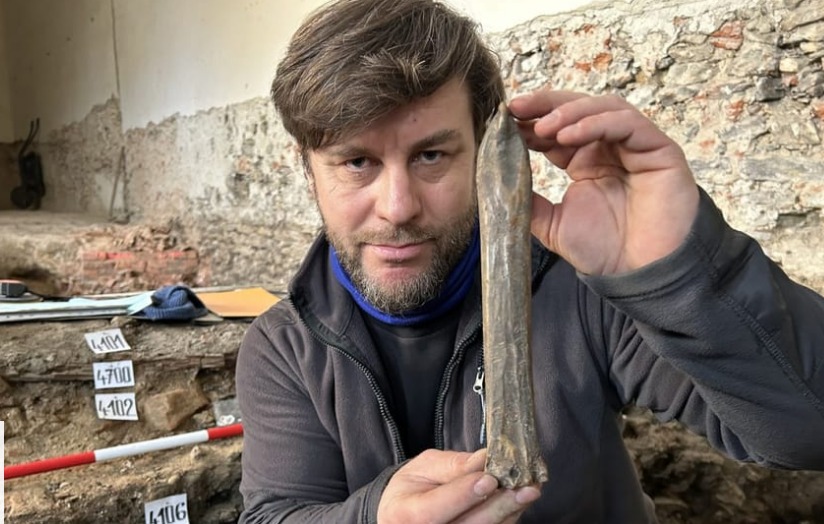
Archaeologists find 1,000-year-old bone skate
Archaeologists have discovered a 1,000-year-old bone skate in Přerov, Czech Republic. The find is seen as evidence that people in the region practiced winter sports in the Middle Ages.
The skate was found during an archaeological excavation in the historic center of Přerov. The excavation is being carried out by archaeologists from the Přerov Museum and Masaryk University.
The excavation site is located in the city’s Upper Square, which in the 10th or 11th century was a series of small settlements along the tributaries of the Bečva River, located on a fortified square where a castle would later be built.

The skate is made from a horse’s tibia and is about 20 centimeters long. The end of the skate is curved and there is a hole at the bottom. It is thought that this hole was used to attach the skate to the foot.
Archaeologist Jan Frolík from the Přerov Museum estimates that the skate dates from the 10th or 11th century. Frolík says the skate was probably used for transportation or entertainment.
“This find is evidence that people living in Přerov in the Middle Ages practiced winter sports,” says Frolík.

The skate provides important insights into the daily life of people in the region.
“Instead of skating, they used one or two sticks to move along the frozen surface,” Zdeněk Schenk, an archaeologist at the excavation, told Prague International Radio. They also tied knives to sleds to carry a load of goods through the frozen water.”
The skate will be exhibited in the Přerov Museum.
Much older bone skates dating back about 3,500 years have been found in China. These discoveries show that ice skating has been used for a very long time.
Cover Photo: Lenka Kratochvílová, Czech Radio
You may also like
- A 1700-year-old statue of Pan unearthed during the excavations at Polyeuktos in İstanbul
- The granary was found in the ancient city of Sebaste, founded by the first Roman emperor Augustus
- Donalar Kale Kapı Rock Tomb or Donalar Rock Tomb
- Theater emerges as works continue in ancient city of Perinthos
- Urartian King Argishti’s bronze shield revealed the name of an unknown country
- The religious center of Lycia, the ancient city of Letoon
- Who were the Luwians?
- A new study brings a fresh perspective on the Anatolian origin of the Indo-European languages
- Perhaps the oldest thermal treatment center in the world, which has been in continuous use for 2000 years -Basilica Therma Roman Bath or King’s Daughter-
- The largest synagogue of the ancient world, located in the ancient city of Sardis, is being restored











Leave a Reply